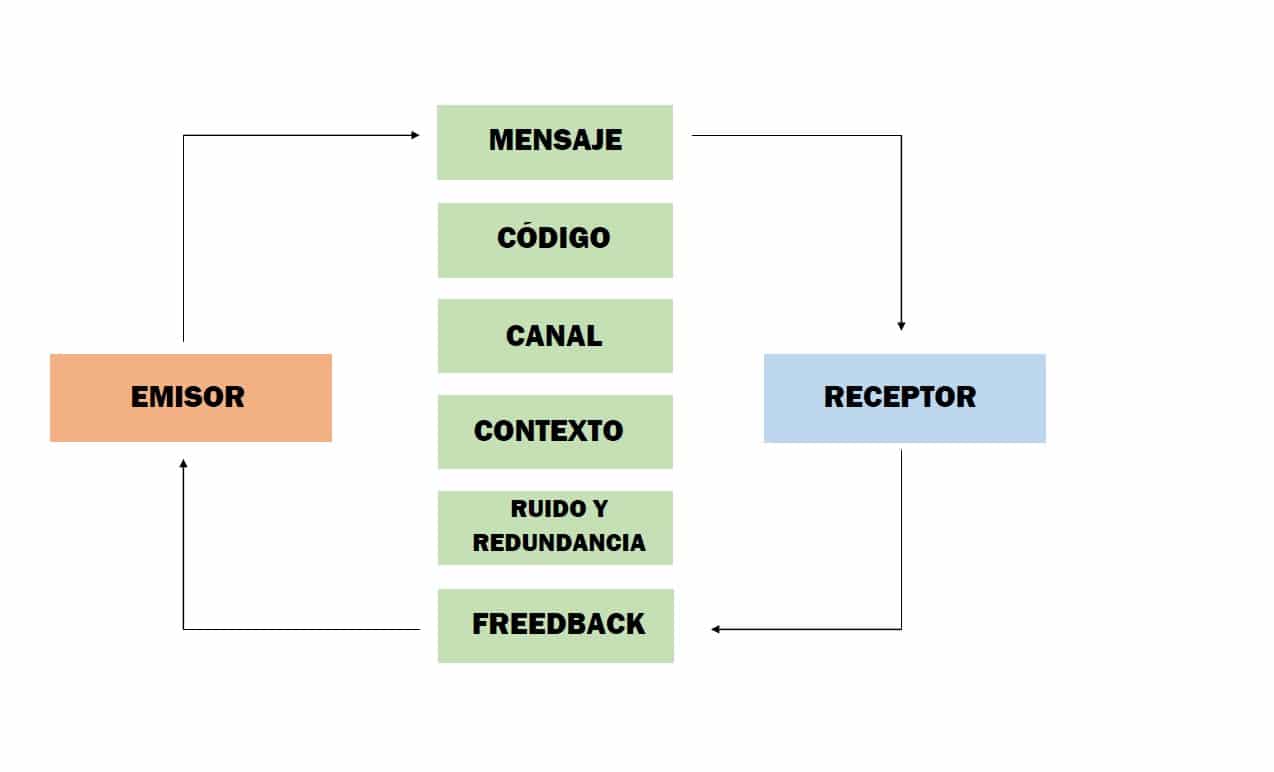
The communication process is bidirectional, that is, two or more people exchange information., opinion, feelings among other things. This exchange occurs through the use of one or more languages.
Knowing what the elements of communication are is an important step to be able to carry out the communicative act. that we were talking about before. If this act is not carried out in the correct way, the message that you want to transmit will never reach the recipient.
We will talk about each and every one of the elements involved in sending, receiving and interpreting the message. Each one brings a different value to the rest of them, always depending on the circumstances, they will help improve or worsen communication.
What is communication?

One of the most important functions we have as human beings is to be able to express ourselves through communication., which allows us to exchange various information between one or a group of people.
It is not a practice that only the human species can develop exclusively, since this communicative process is also experienced by animals through meowing, barking, mooing, etc.. For example, when a dog is hungry, it manifests that need by barking.
This process that we are talking about also occurs when we hear certain sounds caused by various objects or machines.. These sounds can occur directly, when we ring the doorbell at home, or indirectly when an alarm sounds.
Other sounds apart from those mentioned can occur in a more developed way, let's call it smarter, these sounds are for example when we get a notification to update the software of our mobile device.
For all this, the Communication has to be understood as a process in which there is an exchange of certain information between a sender and a receiver.
What are the elements of communication?

As we mentioned at the beginning of this publication, In order to make the communication process possible, it is necessary for various elements to appear.. These elements of communication constitute a scheme in which all become essential.
Transmitter
It is the starting point of the communication process, it is the person who creates and sends the message. For this message to reach the receiver correctly, both must share the same channels and codes.
We understand that the sender is the one who intends to communicate something to the receiver, but these roles are flexible, that is, sender and receiver can exchange their roles.
When telephone companies call us on our mobile to offer us a certain offer, the teleoperator is the sender and we are the receivers.
Receptor
In this case the figure of the receiver, it is in charge of receiving the message sent by the sender and has to be able to decode it to understand it.
This receiver role can occur in two ways; voluntarily or involuntarily. If given voluntarily, the recipient actively participates in communication. On the other hand, it can occur involuntarily when listening to someone else's conversation or receiving information that did not go directly to him.
As we have said, the roles of sender and receiver are combined. If you decide to receive the message and not answer, we speak of the receiver. But when it responds to that information for the sender role.
Message
Referring to the message, is the information that the sender wants to transmit to the receiver. A message is a combination of a system of signs or symbols in order to convey a concept, idea, information, desire, etc.
It is the receiver as we have mentioned before, the one in charge of decoding the message for its later understanding. If it has been sent in an unknown code or channel, decoding will be more complicated.
Custom code
In this element of communication, It has to do with the system of signs that both sender and receiver use when transmitting information. This sign system must be known by both roles to achieve correct encoding and decoding.
Linguistic codes can be of two different types; oral or written. In the case of oral signs, we refer to the language in which they are expressed, and as for written signs, we speak of sign systems that require specific literacy skills.
Coding is about organizing the ideas in our minds before we communicate them. through a code. Decoding on the other hand, consists of deciphering the message that the receiver has built when performing the encoding process

Canal
In this case, we refer to the means by which the message is sent., that is, if it is by letter, SMS, call, etc. The physical medium where the transfer of information from the sender to the receiver is taking place.
The use of one channel or another can be an element that conditions the way in which said message will reach the receiver.. It will not be the same if we do it by letter than by call, for example.
Context or situation of the communication
In this case, The communicative context or situation is about the external situation that is around the entire communication process and that helps or not the receiver to understand the message sent. This context can not only help to understand the message, but can also modify its meaning depending on the communicative situation that occurs.
An example to see it in a clearer way is the following, if we ask for a drink in a bar it does not require more linguistic elements, but if we send that same message in a library it becomes incomprehensible.
It is necessary to differentiate between external context or communicative situation and internal or linguistic context. We have just explained the first of them in the previous paragraphs, but the internal context is the words that accompany the message that we want to make the receiver understand.
noise and redundancy
The previous six elements are the main ones and the ones that we all know from childhood. Noise is also an important element of communication since it is considered a disturbing element. for the communication process, since it can make it difficult to understand the message.
These noises do not only refer to loud sounds, but can be a lack of coverage in a call, interference in the microphone, bad impression in the notes, etc.
The solution to this problem is what is known as redundancy, which consists of repeating and trying to prevent these failures from occurring again. in the communication of the message.
Feedback or freedback
Finally, we are going to explain what the element of feedback in communication consists of. It is a control mechanism of the message by the figure of the issuer.
At the beginning of this publication, we told you that communication was a two-way process, where sender and receiver exchanged roles continuously during the course of communication. The feedback or feedback, has an important role since it serves to know the effectiveness of the messages launched by the issuer.
Thanks to this, the person or persons in charge of issuing a message can check if it has been received or interpreted correctly.
Verbal and non-verbal communication

Once we know the different elements that intervene in the communication process, You have to know how verbal and non-verbal communication differ.
Human beings not only communicate through the process of exchanging information in a conversation. East exchange, is accompanied by external acts called non-verbal gestures, looks, postures, etc.
In the better understanding of nonverbal communication, several studies have been carried out where three different branches of studies have emerged where non-verbal communication is classified for a better understanding.
kinesics
It is the branch in charge of the study of gestures and body movements that we make during the communication process.. Not all people and even cultures express ourselves in the same way, with the same gestures or movements.
Proxemics
In this case the closeness or distance of the members who participate in the communication of the message is studied, in addition to their postures and the context in which the communication occurs.
It is determined that different positions can facilitate or even hinder certain communication processes. We do not use the same postures or gestures, when we are with some people or others.
Paralinguistics
Finally, this branch is based on the extralinguistic elements that participate in the communication process of a message. These elements to which we refer can be the tone of voice, mood, volume, etc.
It is important that we all learn and know what the elements of communication are, since we should all communicate efficiently with each other.
As sociable people we must worry about knowing how to transmit our opinions, desires, ideas, feelings, etc., for this it is essential to recognize the importance of the elements that we have talked about in this publication.